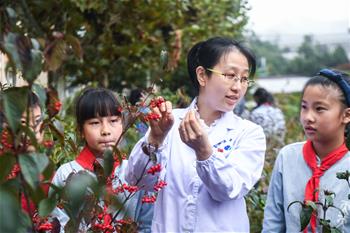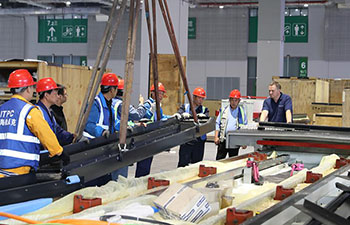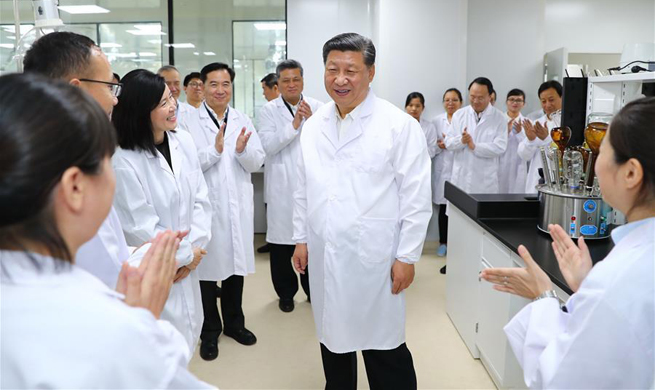SYDNEY, Oct. 23 (Xinhua) -- By recreating 450 million year old enzymes, researchers from Australia's University of Queensland (UQ) say they have unlocked a "hack" which could lead to new drugs, flavors, fragrances and biofuels.
Enzymes are important proteins which speed up the rate of various chemical reactions, for instance, photosynthesis in plants, or in our very own respiratory and digestive systems.
However, enzymes are sensitive to temperature, meaning that even though higher temperatures can make chemical reactions occur faster, the enzymes themselves can only handle a certain amount of heat before they break down.
Currently, a team including Prof. Elizabeth Gillam from UQ's School of Chemistry and Molecular Biosciences, have recreated ancient enzymes which they say can handle higher temperatures making them useful in an increased number of chemical reactions, and much more cheaply and effectively.
"We looked at how we could use a biological agent, like enzymes, to accelerate chemical reactions, as an alternative to current commercial processes," Gillam said.
"Naturally occurring enzymes do not survive for long enough to make this alternative competitive, so we came up with a hack."
The enzymes that the team reconstructed, existed on earth when temperatures where around 60 degrees celsius, meaning they are able to survive high temperatures making them a cheap and effective alternative to what is currently used in creating chemicals.
"We obtained all the gene sequences we could for a particular set of ancient enzymes, worked out their genetic evolutionary history and determined the most likely sequence of their common ancestor that would have existed in the earliest vertebrate animals," Gillam said.
"Then we recreated this gene, put it into a bacterium and tested the properties of the enzyme it encoded."
Gillam says that the new enzyme can be highly useful in changing the structure of complex chemicals, such as is done when making drugs or other chemicals such as fragrances and agricultural products.













